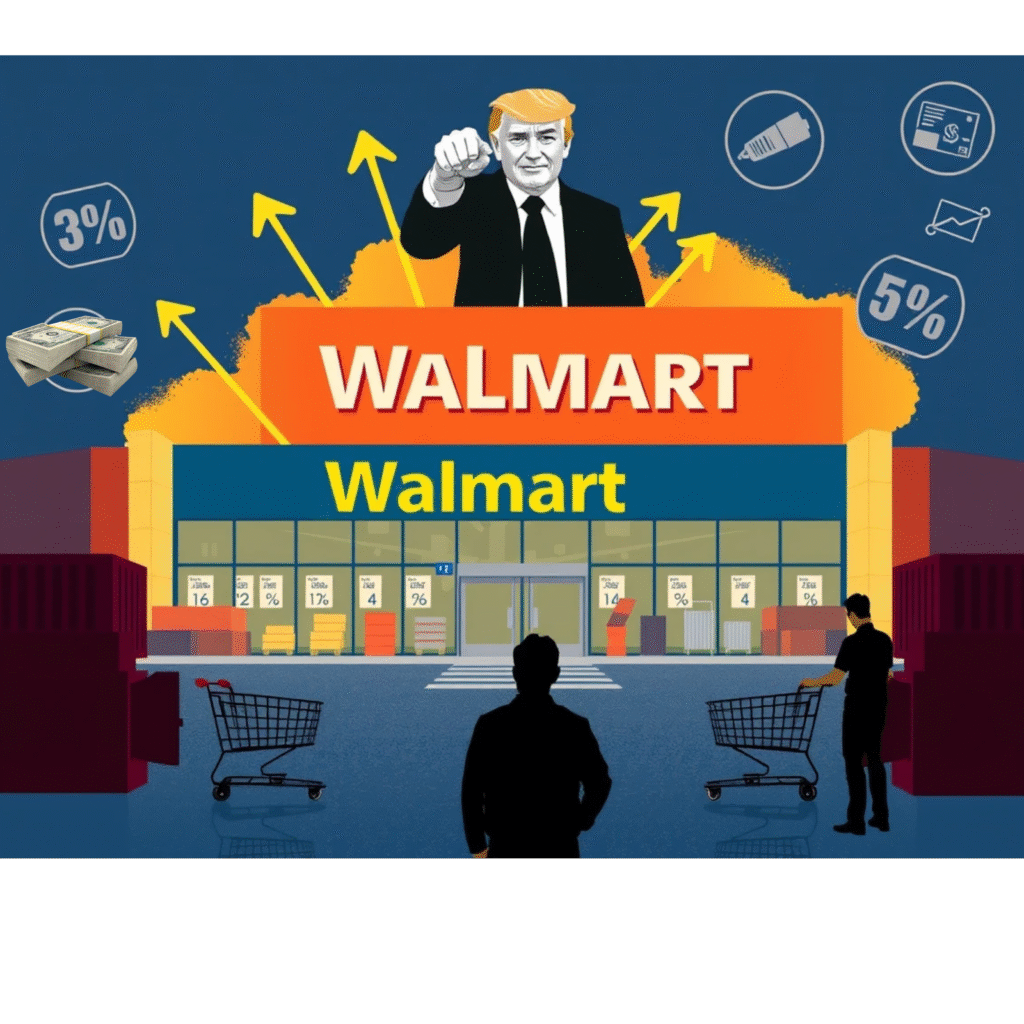President Trump Urges Walmart to “Eat the Cost” of Tariffs Amid Rising Consumer Prices

President Donald Trump recently made headlines again by urging Walmart to “eat the cost” of higher tariffs instead of passing them on to American consumers. This came after the retail giant announced that rising tariffs were forcing it to raise prices on many of its products.
Walmart, the nation’s largest private employer with over 1.6 million workers and more than 4,600 stores across the U.S., sources many goods from countries facing tariffs, particularly China. These tariffs currently range from 10% to 30%, putting significant pressure on retailers who import a large share of their merchandise.
The Impact of Tariffs on Walmart and U.S. Retail
Augusta Saraiva, a Bloomberg News reporter specializing in trade and retail, explains that Walmart faces a tough balancing act. “They want to keep prices low for consumers as long as possible, but with tariffs increasing, Walmart must decide between protecting their profit margins and maintaining customer demand,” she says.
This dilemma is not unique to Walmart. Many U.S. businesses reliant on imported goods face the challenge of absorbing higher costs or passing them on, at a time when consumer spending is already softening.
What Rising Prices Mean for American Shoppers
For millions of Americans who rely on Walmart and similar retailers, the potential price increases come on top of a period of historically high inflation and rising borrowing costs, including credit card interest rates. Saraiva notes that consumers may need to adjust their spending habits, cutting back on non-essential purchases such as vacations or luxury items.
Low-income consumers, in particular, are likely to feel the greatest impact. “Tariffs tend to hit low-income households harder because they take up a larger percentage of their income,” Saraiva points out. While the labor market remains relatively strong, wage growth has slowed, creating additional pressure on these households to absorb rising costs.
Walmart’s Strategy: Preparing Consumers and Sending a Message
Walmart’s early warning about impending price hikes serves a dual purpose. On one hand, the company aims to prevent consumer panic buying similar to what happened at the start of the COVID-19 pandemic, when fears of shortages caused stockpiling of essentials like toilet paper.
On the other hand, it is also a subtle message to the White House. Large retailers including Walmart, Target, and Home Depot have met with President Trump recently to discuss the tariffs and their consequences. By publicly addressing the issue, Walmart signals the real economic strain tariffs are placing on their business.
Consumer Sentiment and Supply Chain Uncertainty
The University of Michigan recently released data showing consumer sentiment in the U.S. is at its second-lowest point on record for April. Saraiva explains that while the drop in the consumer price index seemed like good news initially, it actually reflects weakening consumer demand.
Adding to this uncertainty is ongoing instability in supply chains. “Many people are not just consumers—they’re also workers within the supply chain. This uncertainty leads to softer consumer spending,” Saraiva says.
Challenges at U.S. Ports and Effects on Small Businesses
Compounding these issues, major West Coast ports have seen erratic activity due to the halt in shipments from China amid the tariff conflict. After a surge of container traffic in April, May experienced a 35% drop, with expectations for a rebound in June as the holiday season approaches.
Gene Seroka, Executive Director of the Port of Los Angeles, explains that this “up and down” pattern causes lost capacity and inefficiency. For large companies like Walmart, the impact is manageable. But small businesses—making up a large part of the U.S. economy—face greater challenges in securing timely product deliveries and competing on price.
The Reality of Trade and Tariffs
President Trump’s direct message to Walmart—“eat the tariffs” and not increase prices—is a clear stance on trade policy but places pressure on retailers caught in the crossfire. Walmart’s warning that price increases are inevitable shows the real cost of tariffs beyond just politics.
Seroka notes that with many shipping cancellations and delays, May is shaping up to be a light month for imports through the Port of Los Angeles. This tightens the timeline for seasonal merchandise orders and adds to uncertainty around pricing and availability.
What Lies Ahead for U.S. Retailers and Consumers?
With the holiday season just months away, retailers are making crucial decisions on inventory and pricing without clear guidance on tariff policies or supply chain stability. The lag time to return to normal operations means consumers could face continued price volatility and potential shortages.
For shoppers, the message is to prepare for rising costs and perhaps rethink spending priorities. For retailers, especially small businesses, navigating tariffs and supply disruptions requires strategic planning and resilience.
Thanks you…
